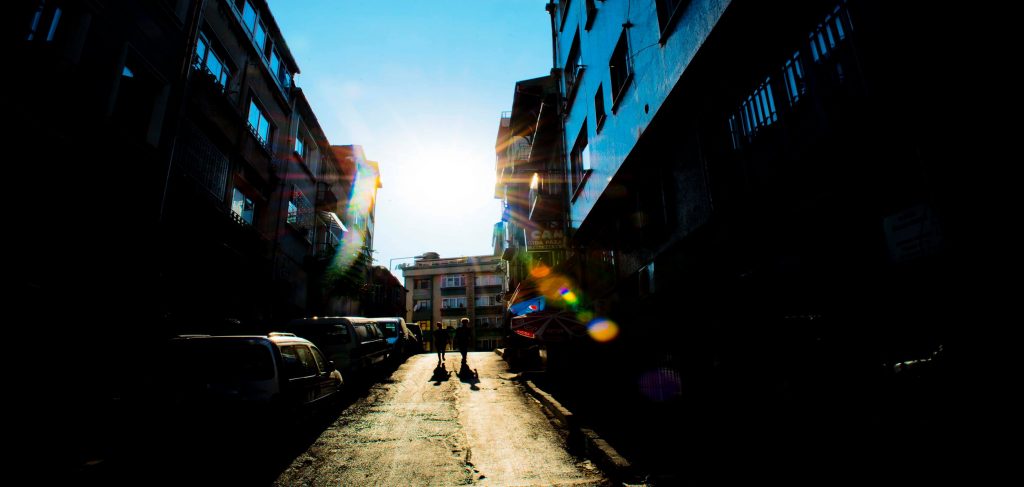Taniel or Daniel … and visiting Istanbul to find Varoujan’s Constantinople

One question people regularly ask me about the film is why did I use the spelling Taniel and not Daniel.
Interestingly, this is something I got wrong myself at the beginning but an issue quickly addressed on a visit to Istanbul several years ago.
“Anang che sais”. (don’t say it like that): local Armenians will tell you, even though I am not a fluent speaker I know the difference between Armenian dialects is quite stark, in Armenia where they speak the Eastern dialect, Taniel’s is spelled and pronounced with a D.
It’s also a sad reminder that the effects of genocide is not just the systematic destruction of people but it is also the destruction of culture. The great city of Constantinople where at one time a quarter of the population were Armenian with their schools, theatres, music halls and where art and culture were cherished and celebrated, was one if not the main centre of Armenian identity in the world – is now just a faded memory.
So my first step was to spell his name as he did, “Taniel”.
When writing the script, I knew that making a short film with a historical narrative in the Film Noire style would be a challenge. I had been told that I needed a massive budget, lookalike actors, costumes, authentic looking 1915 locations etc., – but for me, I was more interested about connecting with the man himself, and try to understand his thoughts and dreams, through the surreal images he painted with his wonderful paragraphs and made-up enchanting words.
So where to start? Constantinople, Taniel’s city
Really wanting to discover more about him and see if it was possible to film in locations where Taniel lived, a friend of mine arranged for me to meet up with a top Turkish producer Ali, who’s been involved in high-profile Hollywood productions; and whilst I was waiting for the meeting, my son Aren and I took in the sights. The visit seemed like a pilgrimage, we took a boat ride to the mainly Armenian Kinalada island and then back on the mainland for the old Byzantium town and Armenian churches. We also tried some amazing food especially the Mante, which my grandma used to make.
I wanted to find Taniel’s old home and had been told it was on Cimen street. The place is run down now and walking up the steep climb, blinded by the setting sun I felt elated and very sad at the same time. To stand in a street where Taniel would have walked, talked and laughed was surreal. Watching the wild cats and dogs running around I wondered if their feral ancestors were here then too, Taniel probably would have greeted them like royalty and turned their forms into panthers and wolves hiding in the shadows or dancing in the sun, part of the mythical world he inhabited.
Ali the producer opened the door to his beautiful home with a big smile, saying ‘welcome to your home’, referencing to the fact the district he lived in was mostly Armenian 100 years before. I realised as I sat there in his office looking at the grandeur of the past, I was part of a dying race, a Western Armenian culture doomed to extinction. The script I was holding was about a great man but also one of the many shining lights put out at the hands of the Ottoman government over 100 years ago.
Ali is a wonderful man saddened by the terrible state of his own country and what they have done to others. He was very generous to me and offered to help me make the film. He liked the script which was a great comfort to me from a man of his stature, but could I shoot outside in the open, a film in Turkey that showed Armenians arrested on April 24th in 1915? No, I might have to shoot the prison scene from within my own cell.
So sad that 100 years on very little has changed for Armenians in this once great city.
By Garo Berberian
